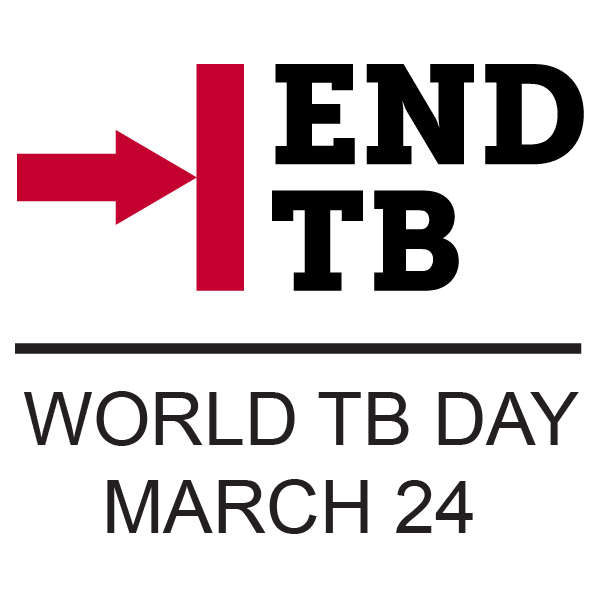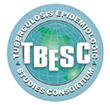By: Aurimar Ayala, MPH, Maricopa County Department of Public Health
 World Tuberculosis (TB) Day, on March 24, is an annual event to commemorate Dr. Robert Koch’s 1882 discovery of Mycobacterium tuberculosis. This year’s theme, “Unite to End TB,” is a nod to the many organizations in the United States (U.S.) and worldwide working in close partnership to eliminate TB. In Arizona, approximately 50% of TB cases are from Maricopa County, the state’s most populous county and the fourth most populous in the U.S. In 2012, Maricopa County Department of Public Health (MCDPH) joined nine other sites across the nation to participate in the Tuberculosis Epidemiologic Studies Consortium (TBESC) II, a Centers for Disease Control and Prevention (CDC) effort to evaluate diagnostic tests for latent tuberculosis infection (LTBI). TBESC II aims to coordinate and strengthen TB research among a diverse group of researchers and organizations including TB control programs and academic institutions. The Consortium represents a unique opportunity for our local health department to collaborate on collecting multi-site data on LTBI in the U.S. and contribute to the collection of generalizable data for the country. At the same time, by participating in this effort, we can also work on identifying local strategies for LTBI and TB prevention and care that can be directly applied at our public health clinic and targeted to the patients that we see.
World Tuberculosis (TB) Day, on March 24, is an annual event to commemorate Dr. Robert Koch’s 1882 discovery of Mycobacterium tuberculosis. This year’s theme, “Unite to End TB,” is a nod to the many organizations in the United States (U.S.) and worldwide working in close partnership to eliminate TB. In Arizona, approximately 50% of TB cases are from Maricopa County, the state’s most populous county and the fourth most populous in the U.S. In 2012, Maricopa County Department of Public Health (MCDPH) joined nine other sites across the nation to participate in the Tuberculosis Epidemiologic Studies Consortium (TBESC) II, a Centers for Disease Control and Prevention (CDC) effort to evaluate diagnostic tests for latent tuberculosis infection (LTBI). TBESC II aims to coordinate and strengthen TB research among a diverse group of researchers and organizations including TB control programs and academic institutions. The Consortium represents a unique opportunity for our local health department to collaborate on collecting multi-site data on LTBI in the U.S. and contribute to the collection of generalizable data for the country. At the same time, by participating in this effort, we can also work on identifying local strategies for LTBI and TB prevention and care that can be directly applied at our public health clinic and targeted to the patients that we see.
Establishing Current Research Priorities
Persons with LTBI are at increased risk for developing active TB disease. Therefore, a critical component of TB prevention and control is the identification and treatment of LTBI in populations at high risk of exposure to TB in order to prevent progression to active TB disease among these groups.
LTBI tests include the tuberculin skin test (TST); the Interferon-gamma release assays (IGRAs); T-SPOT.TB (T-SPOT); and QuantiFERON-TB Gold In-Tube (QFT). There is no gold standard for tuberculosis testing and TST interpretations are complicated by false positive results associated with Bacillus Calmette–Guérin (BCG) vaccination. TBESC II’s main goals are to determine the agreement between these tests and the ability of these tests to predict progression from LTBI to TB disease.
The primary TBESC II study is a prospective cohort of persons at high risk of exposure to Mycobacterium tuberculosis or progression to TB disease. About 6,000 patients are enrolled every year from all sites with a total enrollment goal of 42,000 during a seven-year period. At our local public health clinic site, we contribute about 600 participants to the overall study per year. Over 90% of participants from our site are foreign-born from countries at high or medium risk for TB transmission.
Enrollment criteria and study procedures are standardized across sites. At enrollment, participants are tested for LTBI with the three diagnostic tests: TST, QFT and T-SPOT. The goal is to examine agreement between tests for the entire cohort but also by key groups of interest – including persons with HIV infection, children, refugees, and people that are immunocompromised – in an effort to determine which subgroups are more likely to benefit from various testing strategies. Additionally, researchers are examining changes in cut-off values to determine if sensitivity and specificity can be increased, while also assessing cost and cost-effectiveness of tests. The study will also describe the characteristics of participants that progress to active TB disease.
Collaborating to Strengthen Tuberculosis Research
To determine research priorities and encourage and strengthen collaboration from the different sites, the Consortium has created committees to review research proposals and workgroups that focus on shared topics of interest. These workgroups provide spaces where researchers from different sites can work together. The Consortium encourages each site to analyze their own site data or proposed concept papers to explore research topics using the cohort as a whole. For example, at MCDPH we recently analyzed our site’s data to determine LTBI prevalence and LTBI treatment acceptance and completion rates. We will be using the results of this analysis to increase LTBI treatment compliance in our clinic by focusing on strategies to decrease the number of patients that are lost to follow-up. We also plan to address reasons for refusal of treatment after the person has initially accepted treatment. We are very interested in taking an in-depth look at ways to increase treatment acceptance and compliance rates. As such, we are also part of a group of multi-site researchers at TBESC II exploring this topic for the entire cohort. Working with other sites has great benefits for us at the local level. We can share our experience but also learn from the point of view of other researchers. We are able to bounce ideas around and challenge each other to ensure the highest research standards in our publications.
Looking Forward: Other Research Objectives and Future Plans TBESC II plans to work on strategies to pinpoint populations that are at high risk for TB development but not receiving LTBI services; identify providers for these populations; and gather data about their TB services in an effort to design strategies to maximize diagnosis and treatment in these groups. The Consortium is working on the development and implementation of a data management system that can be used to manage LTBI patients receiving clinical services and can also be used as a surveillance tool. Our site has been pilot testing this system and providing feedback from the perspective of our clinic with the goal of creating a system that can be used by a variety of partners nationwide.
TBESC II plans to work on strategies to pinpoint populations that are at high risk for TB development but not receiving LTBI services; identify providers for these populations; and gather data about their TB services in an effort to design strategies to maximize diagnosis and treatment in these groups. The Consortium is working on the development and implementation of a data management system that can be used to manage LTBI patients receiving clinical services and can also be used as a surveillance tool. Our site has been pilot testing this system and providing feedback from the perspective of our clinic with the goal of creating a system that can be used by a variety of partners nationwide.
Learn more about TBESC II and MCDPH, and feel free to contact TBESC at [email protected] with questions. For more information about how the CDC is working to support public health efforts to eliminate tuberculosis, check out this “Dear Colleague” letter and these resources.








